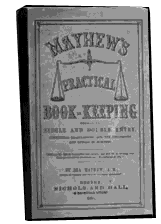Frank Winfield Woolworth
(1852-1919)

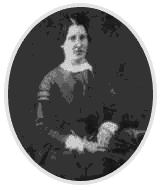
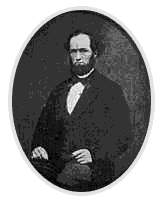
Frank Winfield Woolworth was born in Rodman, New York, on 13 April, 1852. His father, John Hubbell Woolworth, had fought as a Captain in the American Civil War. The soldier had married Fanny McBrier on his return in 1851 and had scraped together the deposit to buy a small farm. His brother, christened Charles Sumner, was born on 1 August, 1856. His parents hoped that one day their sons would take over the farm. As they grew up the boys were expected to help out with the milking before school and picking potatoes by hand in the evening. The whole family's help was needed to generate enough money for living expenses and to keep up the mortgage payments.

 The boys often played at the abandonned home of Napoleon's brother, Joseph Bonaparte. During the 1820s, after being desposed as the puppet King of Spain, he had lived in exile in Bordentown, Pennsylvania. The brothers loved tales of far-away battles and empires.
The boys often played at the abandonned home of Napoleon's brother, Joseph Bonaparte. During the 1820s, after being desposed as the puppet King of Spain, he had lived in exile in Bordentown, Pennsylvania. The brothers loved tales of far-away battles and empires.
Frank's teachers thought him bright and diligent, if a bit of a dreamer. But his studies were often interrupted by the demands of the farm.

In a formative moment as a child, Frank travelled into Watertown with his brother to find a birthday present for their mother. The siblings had scraped together fifty cents for the gift. They spotted a silk headscarf in the window of a department store and went in to pay. They were very hurt when the sales staff teased them for paying in loose change, sneering that next year they might raise enough for a proper gift. Frank walked out and bought a similar item in another shop where the staff were more polite. In later life he recalled the event, and how he had told to his brother that one day people would be able to buy five or even ten items for fifty cents, and shops would give helpful and friendly service to everyone, both rich and poor.
Frank left school at the age of sixteen to work full-time on the farm. He didn't enjoy it. He had a weak constitution that was ill-suited to the cold and damp. He soon persuaded his mother to dip into her savings to pay for him to go to night school, where he wanted to learn about book-keeping. Each night he would race to finish his work before riding into nearby Watertown for class. He worked hard, doing homework back on the farm. The effort helped him to keep up with his classmates, most of whom worked in offices and shops around the City. There was no clue that one day the scruffy country boy would become one of the richest men in America.
As the course continued the young Woolworth became convinced that he could make a living away from the farm. Seeing steam trains running through Watertown, he dreamt of becoming an engine driver and travelling far and wide. He also took a good look at the shops and offices in the City Centre, and wondered whether someone might take him on as an apprentice. He discussed his aspirations at home, where his mother interceded to persuade his father to allow him six months to try to get established in commerce. She gave him a small allowance as pocket money for his first three months. A family friend Daniel McNeil offered to show him the ropes in his local General Store, and after a month arranged an introduction to the proprietors of a major City shop.
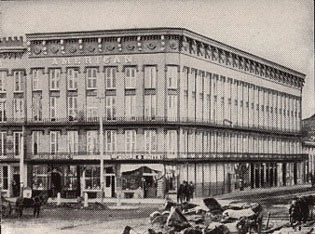
The Augsbury and Moore Dry Goods Store was one of the finest in town. Its staff were smartly dressed and gave customers attentive service. Frank did not own a suit and was not wearing a tie when he went for interview. The senior partner, Morgan Augsbury, found him scruffy and inexperienced, but left the choice to his junior, William Moore.
Moore also had reservations, but was impressed by Woolworth's offer to work unpaid for three months while learning, in exchange for board and lodgings. Moore proposed a six month apprenticeship, and agreed to pay the young man $3.50 a week from the fourth month. Frank began on Monday 24 March, 1873.
Over the months that followed Woolworth tried Moore's patience. He lacked social graces and was nervous and awkward with customers. In an interview in 1917 he told B.C. Forbes that he had asked too many questions, and had not seen things that were under his nose. Moore had reassigned him, and had discovered hidden talents. Frank was given responsibility for checking in goods, keeping the stockroom tidy, and for setting up displays. He established his own system and started to study the merchandise as it passed through, gathering insight into the margins and suppliers. To everyone's surprise he showed a real flair for display. It seemed he could make something out of nothing. His house style employed red cambric (felt cloth) to cover the table or shelf to draw attention to the display, which was always topped with a large, neatly lettered sign showing the price of the articles below.
Frank was amiable and popular. The other trainees looked up to him, as he was a little older. They considered him a man of the world. He later recalled with pleasure that the older ladies in-store liked to mother him, charmed by his bright blue eyes and cheeky smile. Later he made a point of repaying everyone who helped a thousand fold as he became successful.
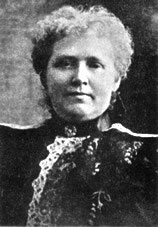
As he grew in confidence, Woolworth requested a pay rise. When this was turned down, he took a job with A.A. Bushnell, a rival merchant in Watertown. His new boss was much more conservative. Staff had to concentrate on customer service, rather than fancy displays. Frank was ineffective as a salesman. Soon his pay was cut. He could not cope with the humiliation and was taken ill. A doctor diagnosed nervous exhaustion and sent him home, where he took to his bed. His parents hired a nurse to care for him.
Jennie Creighton was a Canadian who had sought work locally as a seamstress. She occasionally worked for Augsbury and Moore, and stepped in to act as nurse. Frank was smitten. The two were married in a simple ceremony in the Woolworths' parlour on 11 June, 1876. His new wife restored him to health and later persuaded William Moore and his new partner Perry Smith to reinstate Woolworth as a window dresser and stockman, on the princely salary of $10 a week.
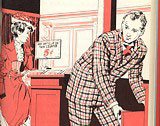
In 1877 the economy slowed down, leaving Moore and Smith with a lot of unsold stock. Moore aimed to clear the surplus from a fixed price display at the back of the store. Everything was to be sold for 5¢. He had heard news that other stores had enjoyed such success that they had gone back for more stock. Moore put Frank in charge. His apprentice built a smart display, using red cambric material to make it stand out, with a bold sign reading "Any article on this table 5¢". It was a big hit. Everything sold out. Additional lines had to be sought from Spelmans, the wholesaler, to maintain momentum. It set Frank thinking. Could a shop prosper selling just five cent merchandise?
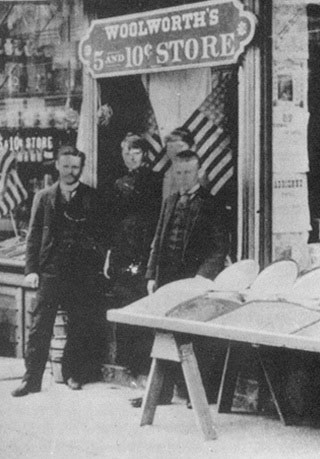
In 1879, Woolworth approached members of his family, asking if they would bankroll him. They laughed. But Moore offered to advance him $300 of stock. He also released Frank to seach for a good location.
The first attempt in Utica, NY had only limited success. Frank paid off his creditors and relocated. On 21 June 1879 the "F. W. Woolworth Great Five Cent Store" opened on North Queen Street, Lancaster, Penna. Sales were $127.65 on the first day. A fortnight later Frank he opened a second branch in nearby Harrisburg, managed by his brother. When the landlord asked for more rent, Sumner Woolworth relocated to Reading, and later to Scranton.
Over the next 25 years, the Brothers engaged family and former co-workers to open 5 & 10¢ stores across North America. Frank fashioned a Buying Consortium, known as the Friendly Rival Syndicate. It comprised five independent chains who pooled ideas and shared common merchandise. He also baled out his mentor William Moore in 1895, financing W.H. Moore & Son 5 & 10¢ Stores in Watertown and Shenectady, New York.
Charlton, Kirby and Knox opted to follow Frank's lead when he incorporated in 1905. Employees and friends were invited to buy shares. None was sold publicly. The defensive move raised the capital needed to grow faster.
Syndicate stores were famed for their novelties and luxuries. These were bought directly from European factories. New markets were established. For example they began to sell weigh-out candy, not for 25¢ per 125g like Macey's, but for just 5¢! Books and sheet music followed a similar pattern.
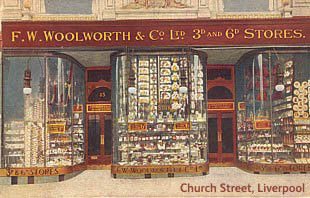
In 1909 Frank controversially decided to open a subsidiary in Great Britain. He placed his second cousin Fred Moore Woolworth in charge. Fred had progressed rapidly in the 5 & 10¢, managing the large store in Sixth Avenue, New York, which incorporated the Reshipping Warehouse.
Three other long-servers, Byron Miller, Samuel Balfour and Charles Hubbard were co-opted, along with an Englishman William Lawrence Stephenson from a UK supplier. The five were given autonomy to adapt the formula to suit the local market. The brand took hold much more quickly than it had in North America. Within five years 'Woolies' had grown to forty-four stores. Cash profits for 1914-15 topped £4 million, despite the outbreak of War.
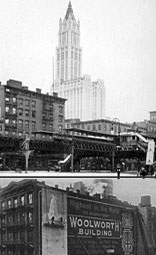
As he approached his sixtieth birthday, Woolworth started to think about his legacy. He wanted recognition and a permanent memorial to his achievements. Following a trend in New York, he resolved to erect the City's tallest skyscraper, which must have grace and style, and make a profit !
He started buying up properties in 1910. Work completed in 1913. The Woolworth Building in Broadway Place, New York, survives to this day. While the Gothic tower was overtaken as the world's tallest in 1929, its grandeur and symmetry remains a popular feature of the New York skyline. As well as demonstrating the power of nickels and dimes, Cas Gilbert's building bears witness to Woolworth's financial and marketing acumen. He bankrolled the $13m project from his own pocket. Despite its hefty price tag, by the time President Woodrow Wilson declared the building open it was already in surplus. Every inch had been let, as America's largest companies fought for the prestigious office space.
The lofty Tower was eclipsed by another money-making idea. Frank persuaded the Syndicate Members to merge with Woolworth's. The new Corporation's stock was then listed on Wall Street. The offer was over-subscribed. It raised $65m for the six founders, half of which went to Frank. He became the first President of F.W. Woolworth Co. Each of the other Founders became a Director and SVP.
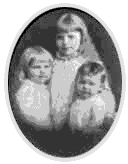
Commercial pressures meant that Frank Woolworth spent very little time at home. His three daughters, Edna, Helena and Jessie, rarely saw their father except on occasional foreign holidays. He tried to make up for his long absences with elaborate toys and luxuries acquired on his European trips. As the girls got older, he became determined that each should find a 'good match', in keeping with his high society aspirations.
Jennie Woolworth told friends that she had been happier when they did not have a dime, than with the millions that had financed a smart town house in Park Avenue. By 1916 she had fallen prey to early onset senile dementia and had receded into a world of her own. Frantic attempts to find a cure led Frank to ignore problems in his daughter Edna's marriage to the financier Franklyn Laws Hutton, with tragic results. Edna's suicide proved hard for Frank to bear, causing a marked deterioration in his own health. Four year old Barbara Hutton, his oldest granddaughter, had discovered her mother dead in bed. The event haunted her.
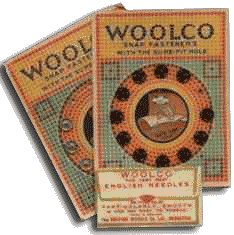
With troubles at home, Woolworth redoubled his efforts at work. The outbreak of war presented a major threat as his supplies of European goods dried up. These accounted for a quarter of all sales and an even higher proportion of profits. Using what he had learned on factory visits in Europe, he evangelised mass production, showing American factories how to make his items quickly and cheaply. By 1915 he had found an indigenous source for everything that he had previously imported. The lower shipping costs carried through to the bottom line as profits rocketed and the 5 & 10¢ surged ahead.
Some believe that Frank's work in getting American industry to adopt European methods was his greatest achievement, outweighing the importance of the huge red-front chain. It brought recognition from the highest in the land, as US President Woodrow Wilson invited Woolworth to join his War Cabinet. Frank took responsibility for fund-raising, and drew on his own experience of the German invasion of France in a highly effective campaign.
Before receiving Wilson's call, Frank had been working on an autobiography. He had hired Bennet Chapple as a ghost-writer. The project was abandonned as both men answered their nation's call. They coined the phrase "a stamp a day for the Man who's away" and persuaded rival dimestores to join Woolworth's in setting up booths to sell savings stamps in-store. The idea was so successful that it was resurrected unchanged during World War II.
In 1918 Frank funded victory parades for returning servicemen in many of the towns where Woolworth's had a store, draping his store fronts with flags until each surviving serviceman had arrived home.
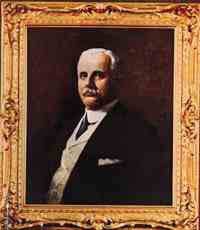
For forty years Frank led Woolworth's from the front. He was larger than life, and was widely respected in the retail trade. Despite paying low wages to beginners, he pioneered a number staff benefits. Loyal employees received sick pay and a social fund made payouts for medical treatment and emergencies. They were the first to get paid holidays and generous Christmas bonuses that went up with service. The family atmosphere in Frank's 1,100 Five-and-Tens and Nothing Over Sixpence stores inspired tremendous loyalty.
Frank was taken ill as he prepared elaborate fortieth birthday celebrations for his stores. He died on Tuesday 8 April 1919, just four days after leaving his desk for the last time. His brother and other family members were at his bedside. In a larger than life move, his arch-rival Sebastian S. Kresge closed his stores for the funeral, in honour of the 'nestor of the Five-and-Ten stores'. Frank would have enjoyed his obituary in the New York Times which said that 'he made his money not by selling a little for a lot, but by selling a lot for a little'.
Frank Woolworth was laid to rest in the family mausoleum at Woodlawn Cemetery in New York.
Shortcuts to related content
1900s Gallery
US Expansion:
Founder Biographies
UK beginnings
Financing and setting up the Company
Join us on opening day in Liverpool
Museum Navigation
